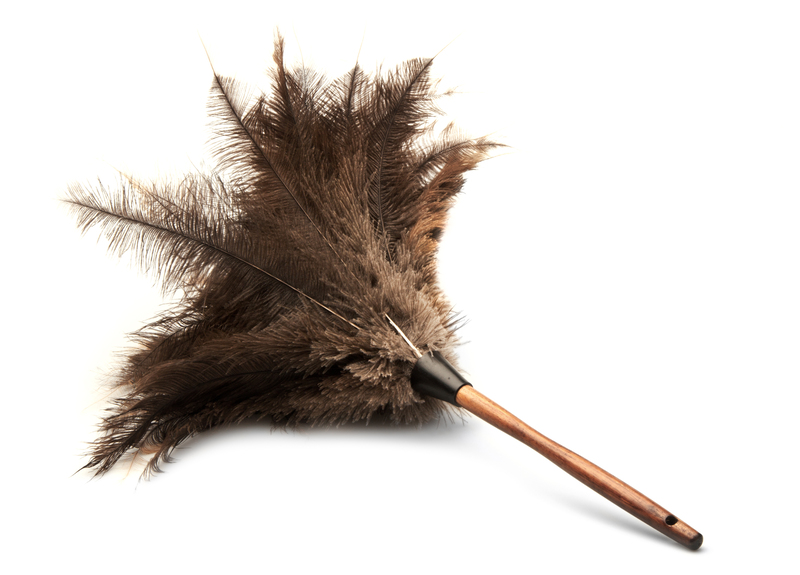Essential Tips for Sustaining a Mold-Free Bathroom
Posted on 08/09/2025
Essential Tips for Sustaining a Mold-Free Bathroom
If there's one home space vulnerable to mold, it's the bathroom. Due to constant exposure to moisture and warmth, bathrooms provide an ideal environment for mold growth, which can lead to unsightly stains, unpleasant odors, property damage, and potential health issues. Maintaining a mold-free bathroom is crucial for preserving both your family's well-being and your home's integrity. Discover the best practices and cutting-edge solutions for sustaining a mold-free bathroom with our comprehensive guide below.
Why Is Mold Prevention Essential?
Mold isn't just a cosmetic issue. It can cause respiratory problems, allergies, and even structural damage over time. Preventing mold in the bathroom means creating an environment where it cannot thrive, protecting the health of household members, and avoiding potentially expensive repairs.
Common Causes of Bathroom Mold
- Poor ventilation
- Persistent humidity and dampness
- Leaking pipes or plumbing fixtures
- Neglected spills and splash zones
- Inadequate cleaning routines
Understanding how mold grows in bathrooms is the first step towards effective long-term prevention. Now, let's explore the essential tips for keeping your bathroom mold-free.

Top Strategies for Sustaining a Bathroom Free of Mold
1. Maximize Ventilation
Adequate ventilation is the most effective defense against mold in any bathroom. Moisture accumulates rapidly during showers or baths, and without proper air movement, it lingers--fueling conditions for mold spores to flourish.
- Install exhaust fans: Ensure your bathroom has a functioning exhaust fan to remove humid air. Run it during and for at least 20 minutes after bathing.
- Open windows: If possible, open windows to allow fresh air to circulate during and after use.
- Use door stoppers or vents to keep air flowing freely between the bathroom and adjacent rooms.
Regularly clean the exhaust fan and ensure it vents outdoors--not into attics or crawl spaces where trapped moisture may create new mold issues.
2. Control Humidity Levels
Mold cannot thrive below 50% relative humidity. Use a hygrometer to monitor bathroom humidity and maintain it between 30-50%. Dehumidifiers are a smart investment, especially for bathrooms lacking windows or exhaust fans.
- Address any condensation promptly. Wipe down wet surfaces after showers.
- Repair leaky faucets, pipes or fittings quickly to avoid ongoing dampness.
- Utilize moisture-absorbing products, such as silica gel packs or desiccant bags, in enclosed spaces.
3. Ensure Thorough Cleaning Routines
Consistent cleaning disrupts mold's ability to take hold. Use a mold-preventing bathroom cleaner at least weekly for all high-risk areas.
- Scrub tile grout, shower doors, and seals with a brush and appropriate cleaner.
- Launder towels, bathmats, and shower curtains frequently.
- Clear and disinfect drains to prevent mildew odors and blockages.
- Dry up pooled water on walls, counters, or floors immediately after use.
Choose cleaning products containing antifungal or mold-inhibiting agents for best results. Natural solutions, such as vinegar or hydrogen peroxide, can be just as effective as chemical cleaners.
4. Select the Right Materials and Finishes
Not all surfaces are created equal--some are inherently more resistant to mold and mildew than others.
- Opt for mold-resistant paint. These specialized paints inhibit spore growth on walls and ceilings.
- Choose tiles, sealed stone, or waterproof panels for wet zones.
- Steer clear of wallpaper or porous materials in the bathroom.
- Use silicone or mildew-resistant caulk when sealing joints or fixtures.
For older bathrooms, re-grout and re-caulk regularly to seal out moisture and prevent mold colonization in cracks.
5. Minimize Clutter and Promote Airflow
Excess toiletries, bottles, and accessories trap moisture and create surfaces where mold can hide.
- Limit storage inside the shower or tub area.
- Invest in open-shelving or elevated storage away from damp floors and walls.
- Hang towels and bathmats so they dry completely between uses.
Keeping the bathroom organized and clear enables more efficient cleaning and less opportunity for mold to take hold unobserved.
6. Address Leaks Instantly
Even a small, unnoticed leak under the sink, around the toilet, or behind tiles can create an ongoing source of moisture for mold to thrive.
- Regularly inspect plumbing joints, valves, and pipes for leaks or drips.
- Look for discolored grout or warped surfaces which could indicate hidden water damage.
- Seal any cracks or gaps promptly using waterproof caulk or professional repair services.
Proactive repairs help preserve your bathroom's structure and prevent mold outbreaks beneath the surface--where they're hardest to detect.
Preventative Upgrades: Long-Term Solutions for Mold-Free Bathrooms
Remodeling with Mold Resistance in Mind
If you're considering renovating your bathroom, prioritize features designed for a healthier, longer-lasting space:
- Install a high-efficiency vent fan with a built-in humidity sensor--it will automatically activate whenever moisture rises above safe levels.
- Select solid surface or non-porous vanities and shower surrounds to block mold intrusion.
- Upgrade to solid core or mildew-resistant doors and trims in humid bathrooms.
- Consider radiant floor heating, which can assist with faster drying of floors and reduce humidity buildup.
Routine Inspections and Maintenance
Set reminders to inspect caulking, grout, and seals every 6 to 12 months for any signs of wear or damage. Regular maintenance now will save costly remediation later.
- Re-seal grout and tiles as needed using mold-resistant products.
- Clean and vacuum bathroom vents regularly to maintain proper airflow.
- Check behind and around vanities, tubs, and toilets for moisture or mold indicators.
Natural and DIY Approaches for Mold Prevention
Eco-Friendly Cleaning Solutions
If you prefer to avoid harsh chemicals, several homemade cleaners are proven to combat mold:
- Distilled white vinegar: Spray pure vinegar onto surfaces, leave for 1 hour, then rinse with water.
- Hydrogen peroxide: Apply 3% peroxide with a spray bottle, let it sit for 10 minutes, scrub, and rinse.
- Mix baking soda and water into a paste for gentle abrasive cleaning--excellent for grout and tile joints.
- Add a few drops of essential oils, such as tea tree or lavender, for extra antibacterial action and a pleasant scent.
Daily Habits to Keep the Bathroom Fresh
Many mold-preventing practices take just seconds a day but pay off with a consistently fresh, clean space:
- Wipe down shower walls, glass, and faucets after every use.
- Hang up towels and open the shower curtain/door to maximize air drying.
- Keep bathroom doors slightly open to allow airflow if possible.
- Empty wastebaskets and launder bath items regularly to avoid moisture buildup.

FAQs on Maintaining a Mold-Free Bathroom
How Often Should I Clean to Prevent Mold?
A weekly thorough cleaning is ideal for preventing mold growth, with extra attention to wet surfaces, grout lines, and hidden corners. Quick daily wipe-downs of high-moisture areas make a significant difference.
What are Signs of Mold I Should Watch Out For?
- Musty odors that linger after ventilation
- Black, green, or brown spots on surfaces, ceilings, or behind fixtures
- Warped paint, peeling wallpaper, or bubbling caulk
- Increased allergy symptoms such as sneezing, coughing, or eye irritation after using the bathroom
Should I Use a Professional Cleaning Service?
For persistent or large areas of mold, or if you're sensitive to allergens, a professional mold remediation service is the safest choice. Experts have the tools and protective equipment to eliminate mold and prevent regrowth thoroughly.
Conclusion: Enjoying a Cleaner, Healthier Bathroom for Life
A mold-free bathroom doesn't have to be a challenge. With these essential tips--from maximizing ventilation to smart material choices and vigilant cleaning routines--you can create a space that's not only beautiful but also safe and healthy. Consistent habits, effective products, and timely maintenance are your best defense against mold. Whether you implement small changes or commit to a full remodel, every step counts in your journey to sustaining a bathroom free of mold. Start today for a fresher tomorrow!





